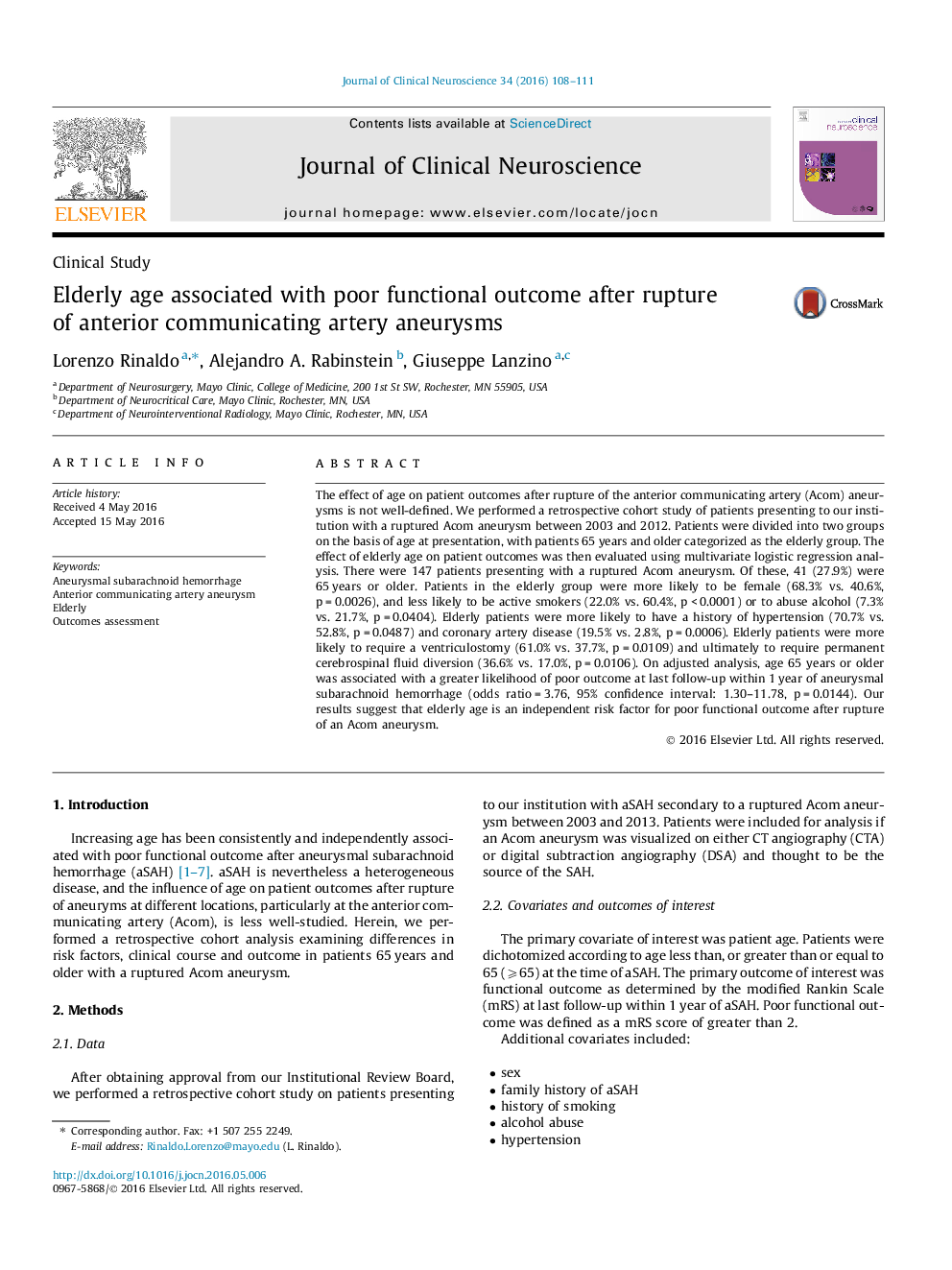| Article ID | Journal | Published Year | Pages | File Type |
|---|---|---|---|---|
| 5629864 | Journal of Clinical Neuroscience | 2016 | 4 Pages |
â¢Age 65 years or older predicts poor outcome after rupture of anterior communicating artery (ACOM) aneurysms.â¢Elderly patients with subarachnoid hemorrhage from ACOM aneurysms are less likely to be smokers.â¢Elderly patients more often require temporary and permanent ventricular drainage.
The effect of age on patient outcomes after rupture of the anterior communicating artery (Acom) aneurysms is not well-defined. We performed a retrospective cohort study of patients presenting to our institution with a ruptured Acom aneurysm between 2003 and 2012. Patients were divided into two groups on the basis of age at presentation, with patients 65 years and older categorized as the elderly group. The effect of elderly age on patient outcomes was then evaluated using multivariate logistic regression analysis. There were 147 patients presenting with a ruptured Acom aneurysm. Of these, 41 (27.9%) were 65 years or older. Patients in the elderly group were more likely to be female (68.3% vs. 40.6%, p = 0.0026), and less likely to be active smokers (22.0% vs. 60.4%, p < 0.0001) or to abuse alcohol (7.3% vs. 21.7%, p = 0.0404). Elderly patients were more likely to have a history of hypertension (70.7% vs. 52.8%, p = 0.0487) and coronary artery disease (19.5% vs. 2.8%, p = 0.0006). Elderly patients were more likely to require a ventriculostomy (61.0% vs. 37.7%, p = 0.0109) and ultimately to require permanent cerebrospinal fluid diversion (36.6% vs. 17.0%, p = 0.0106). On adjusted analysis, age 65 years or older was associated with a greater likelihood of poor outcome at last follow-up within 1 year of aneurysmal subarachnoid hemorrhage (odds ratio = 3.76, 95% confidence interval: 1.30-11.78, p = 0.0144). Our results suggest that elderly age is an independent risk factor for poor functional outcome after rupture of an Acom aneurysm.
